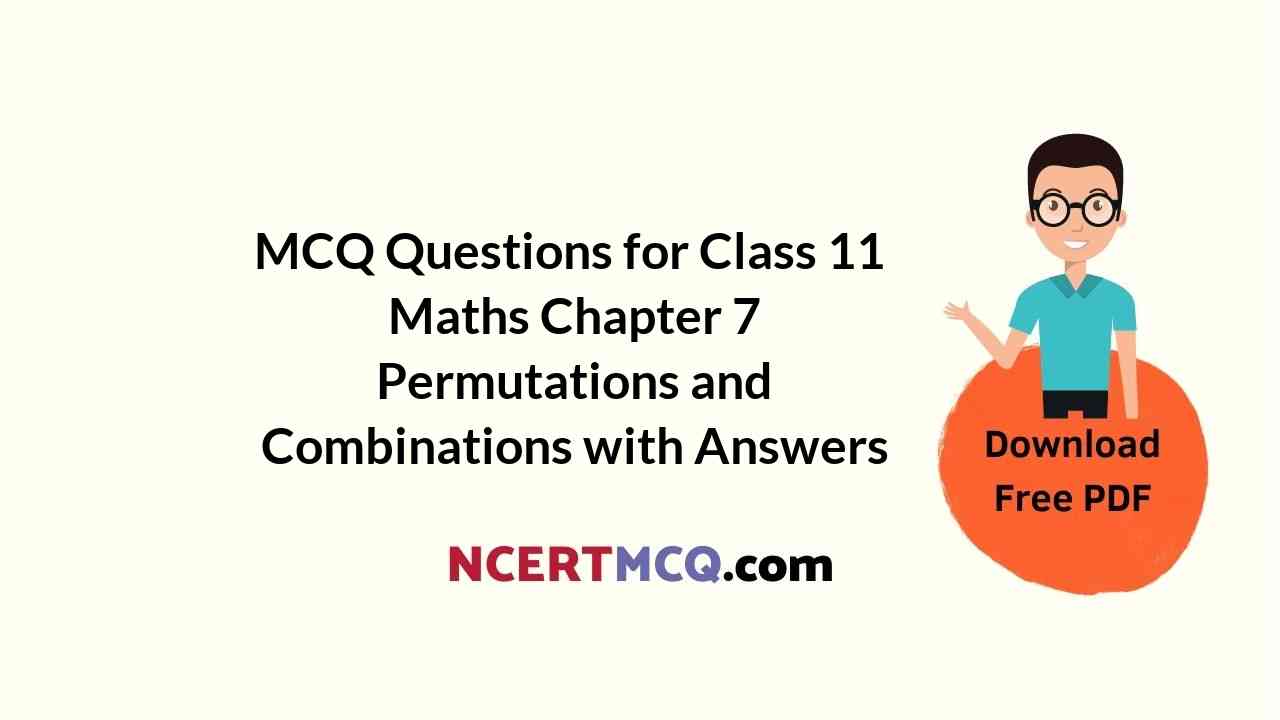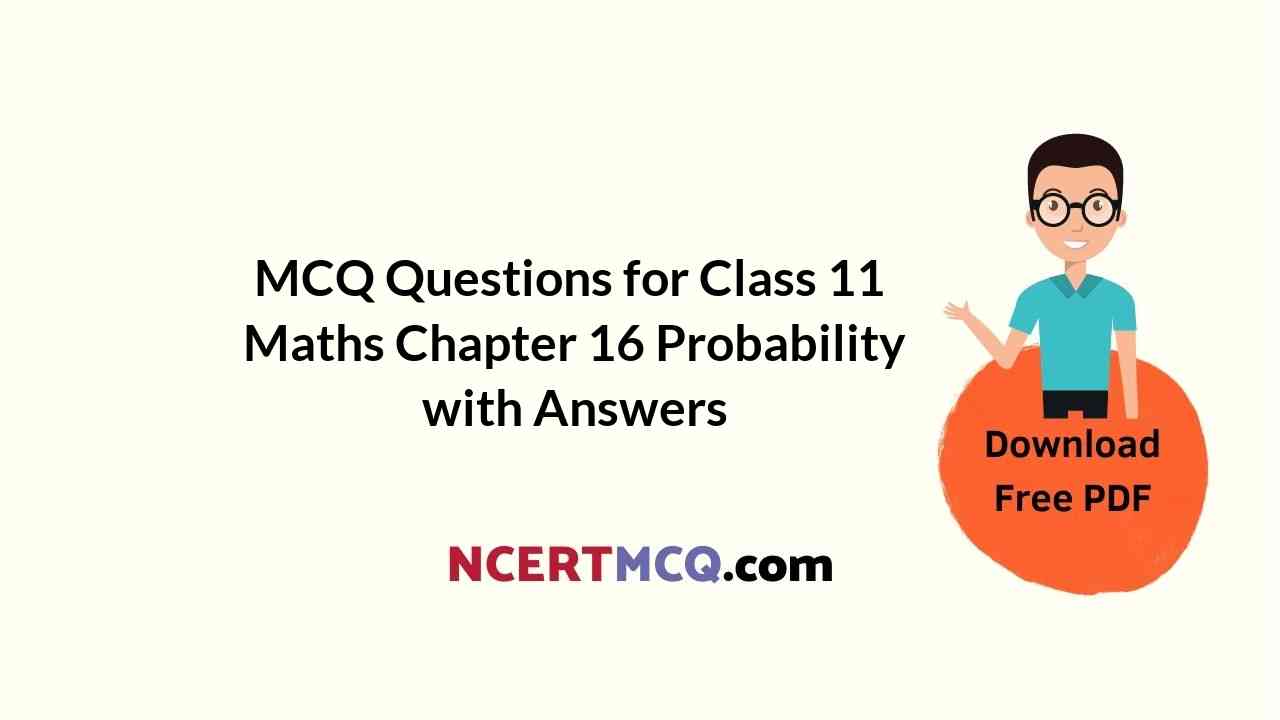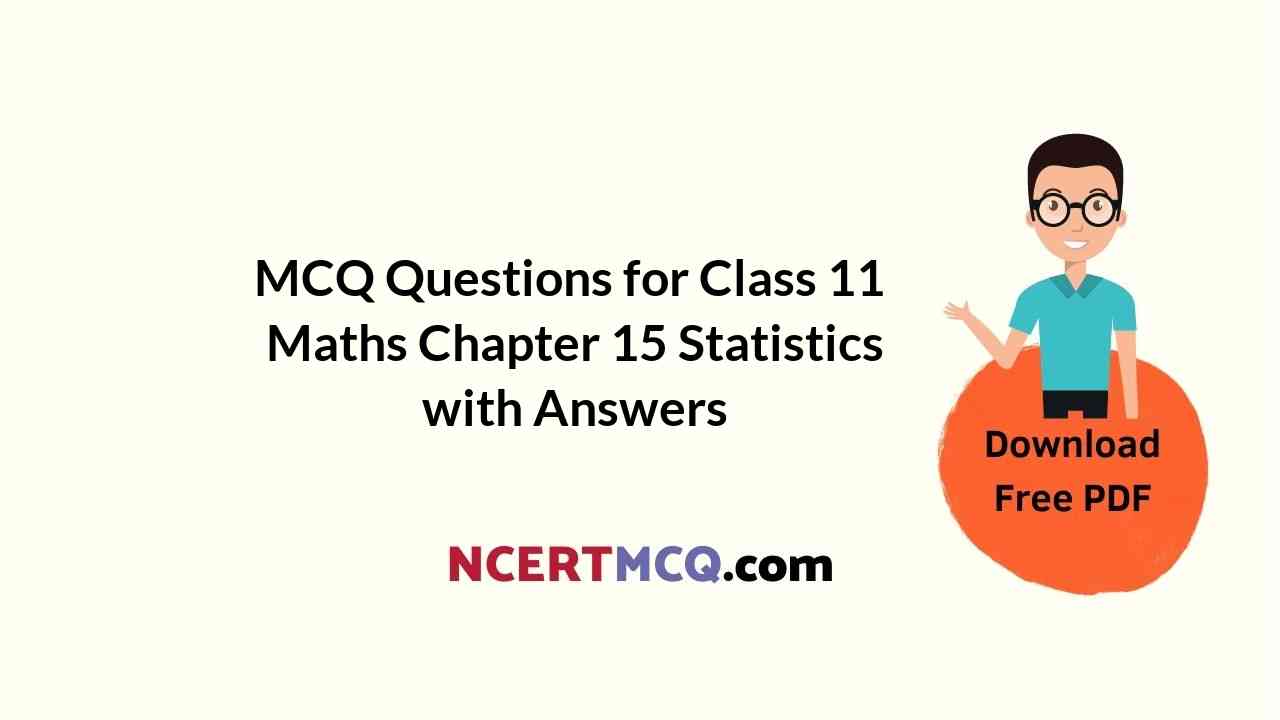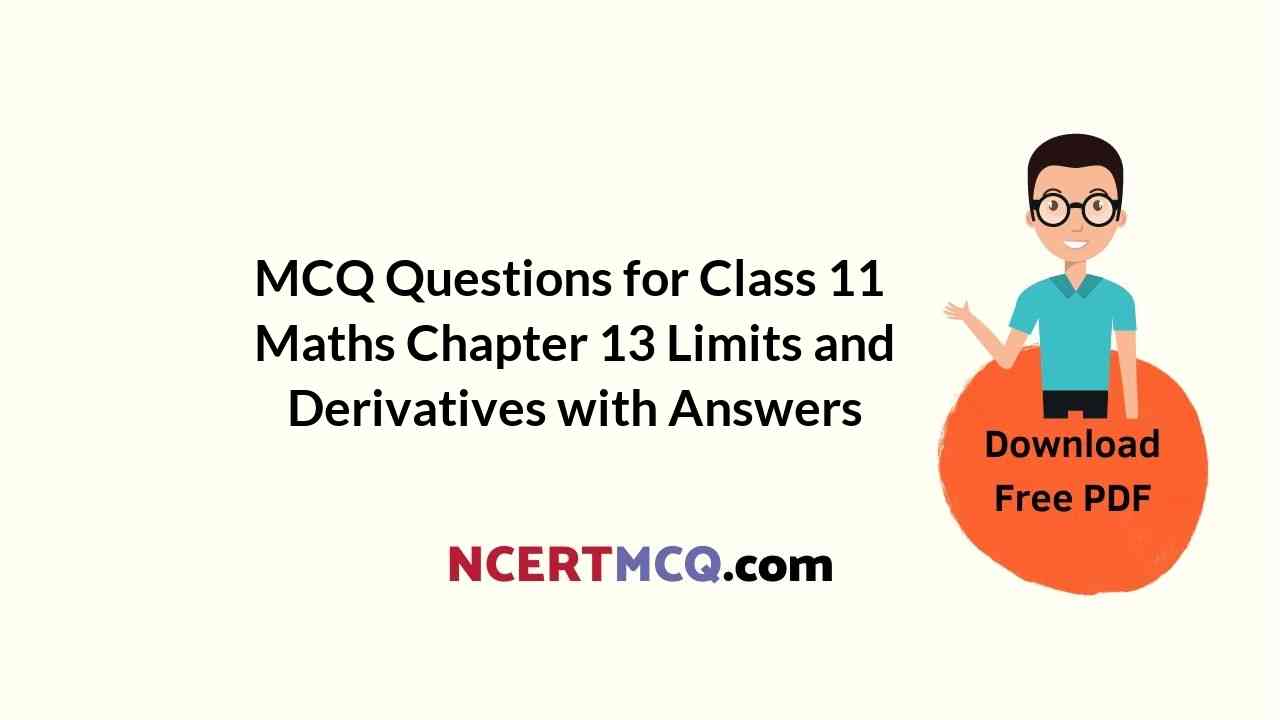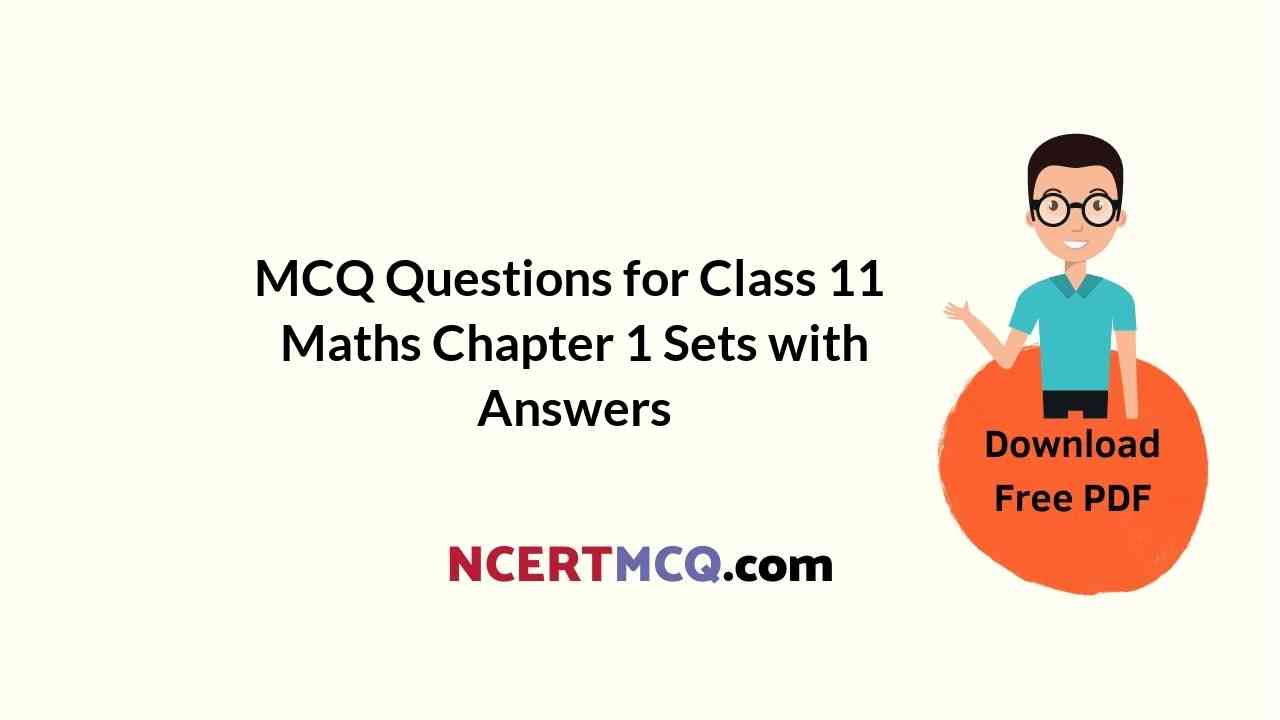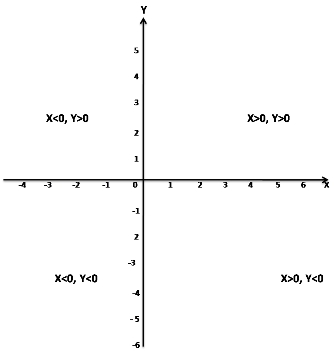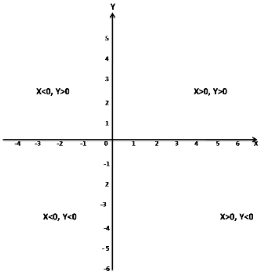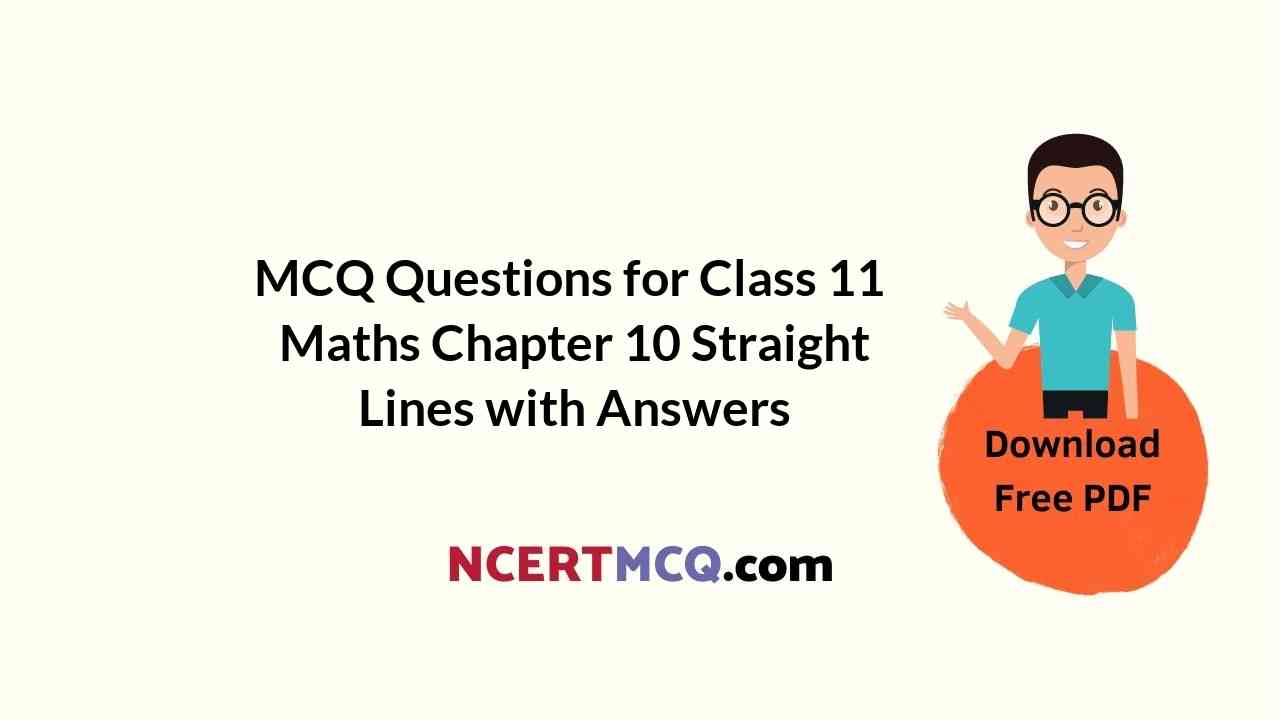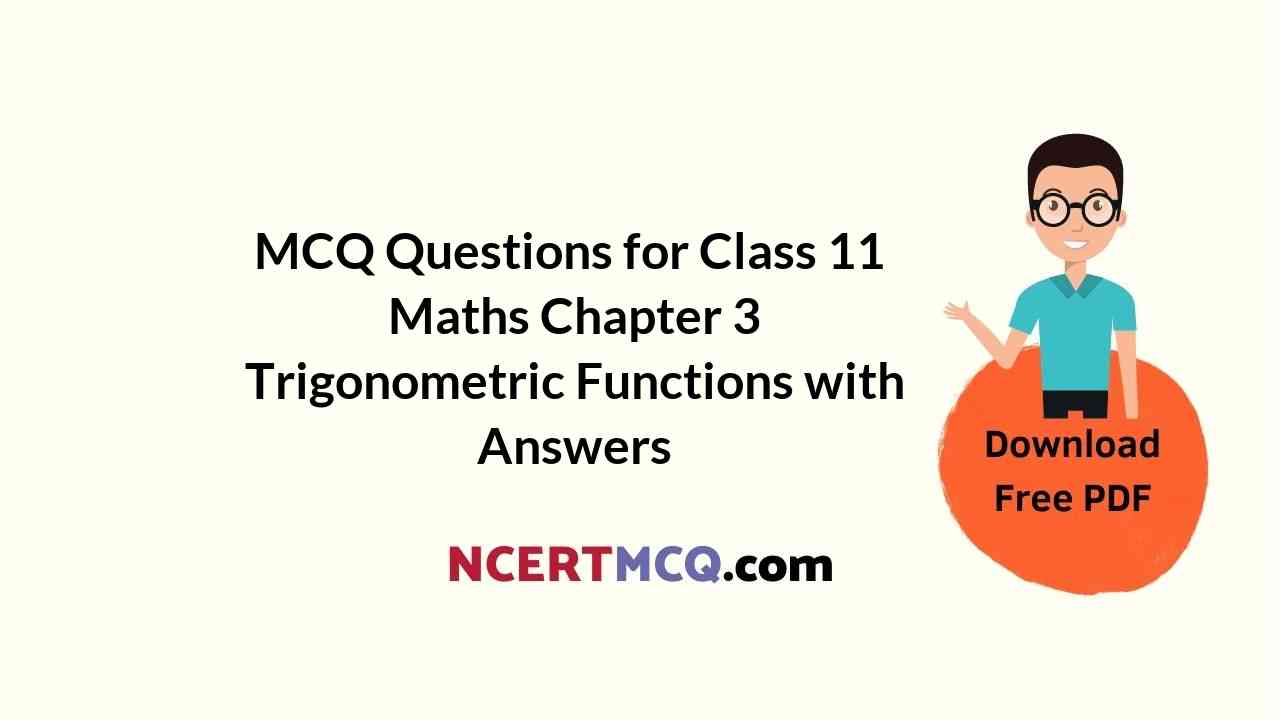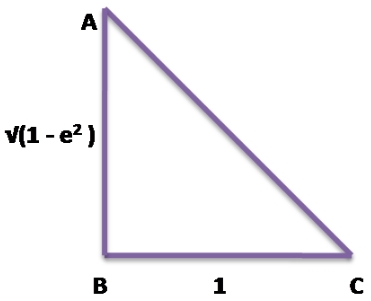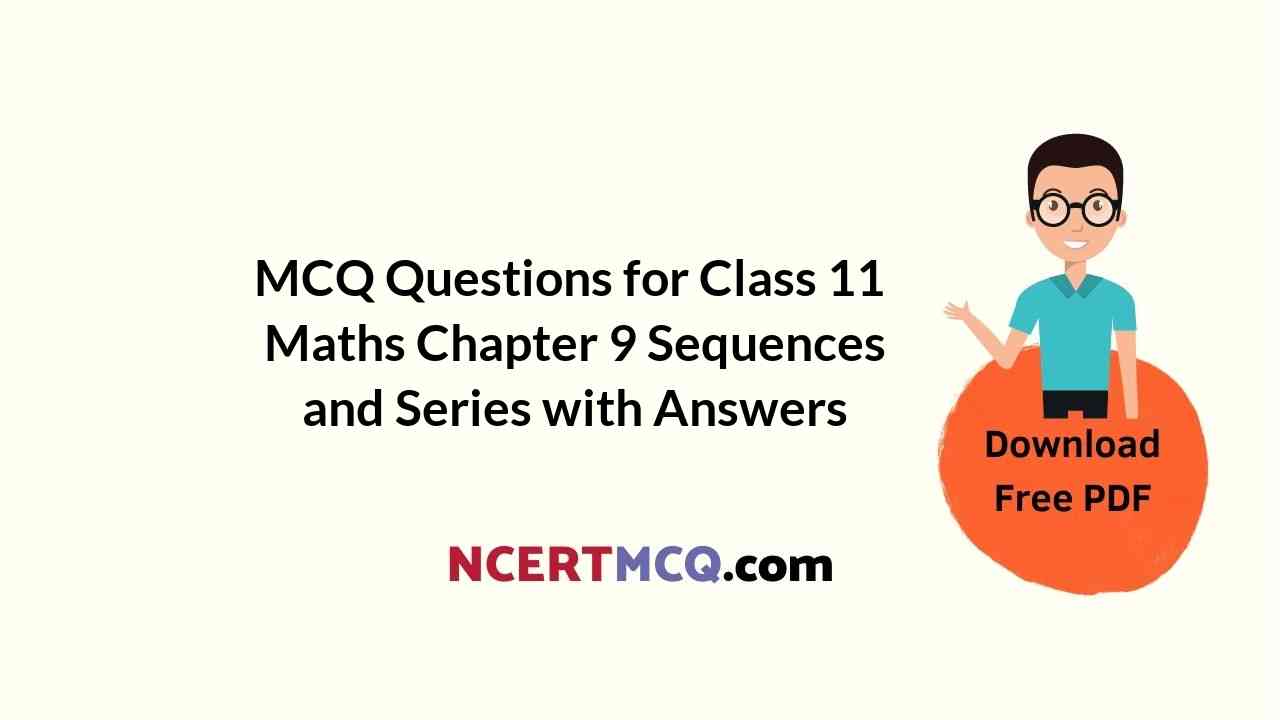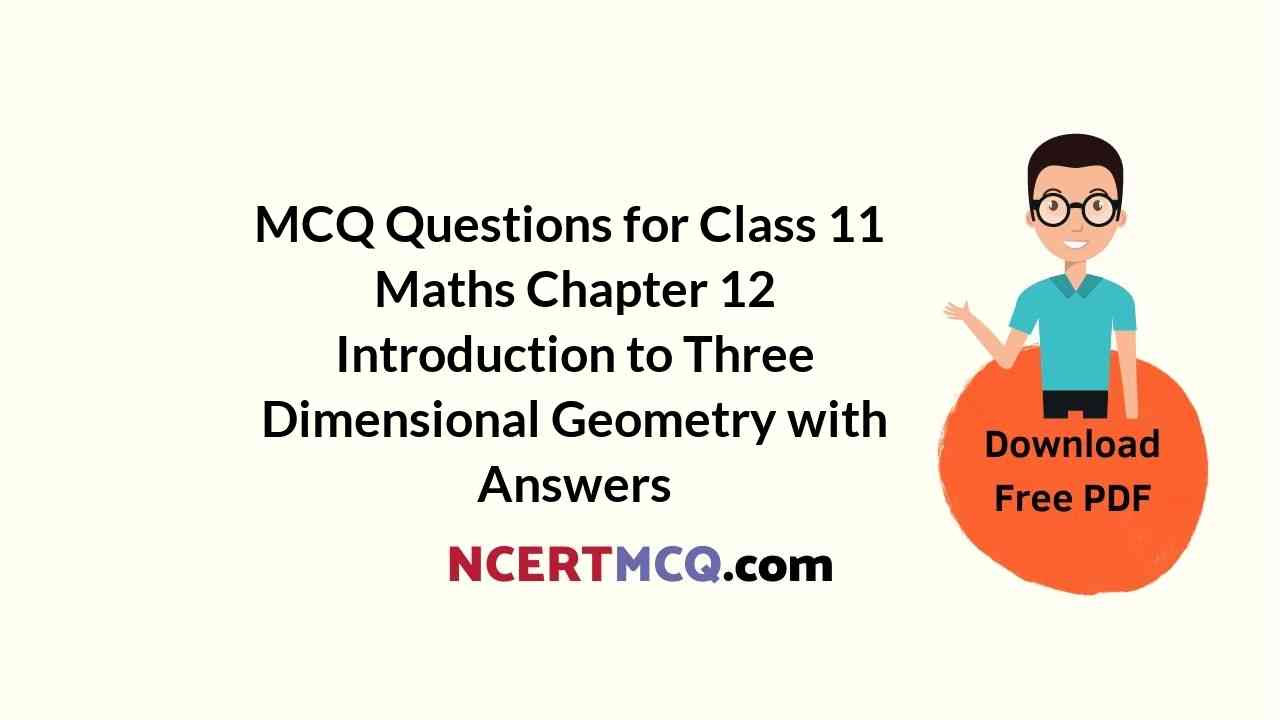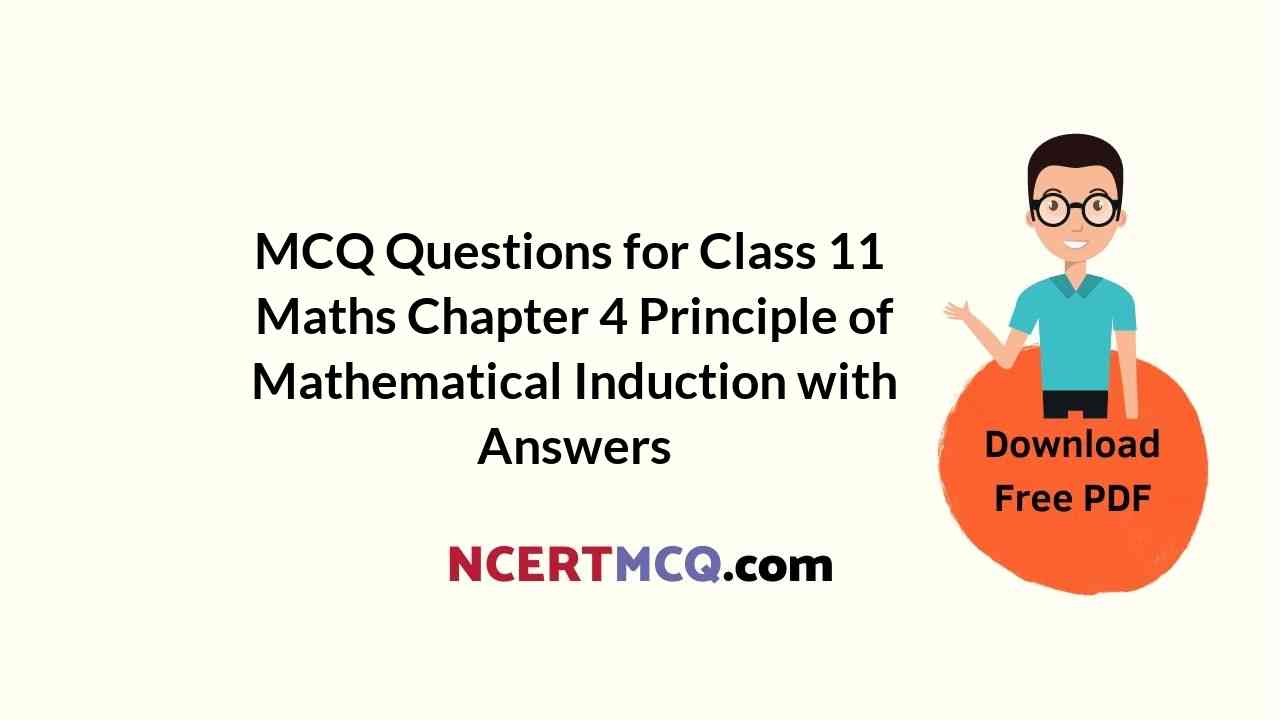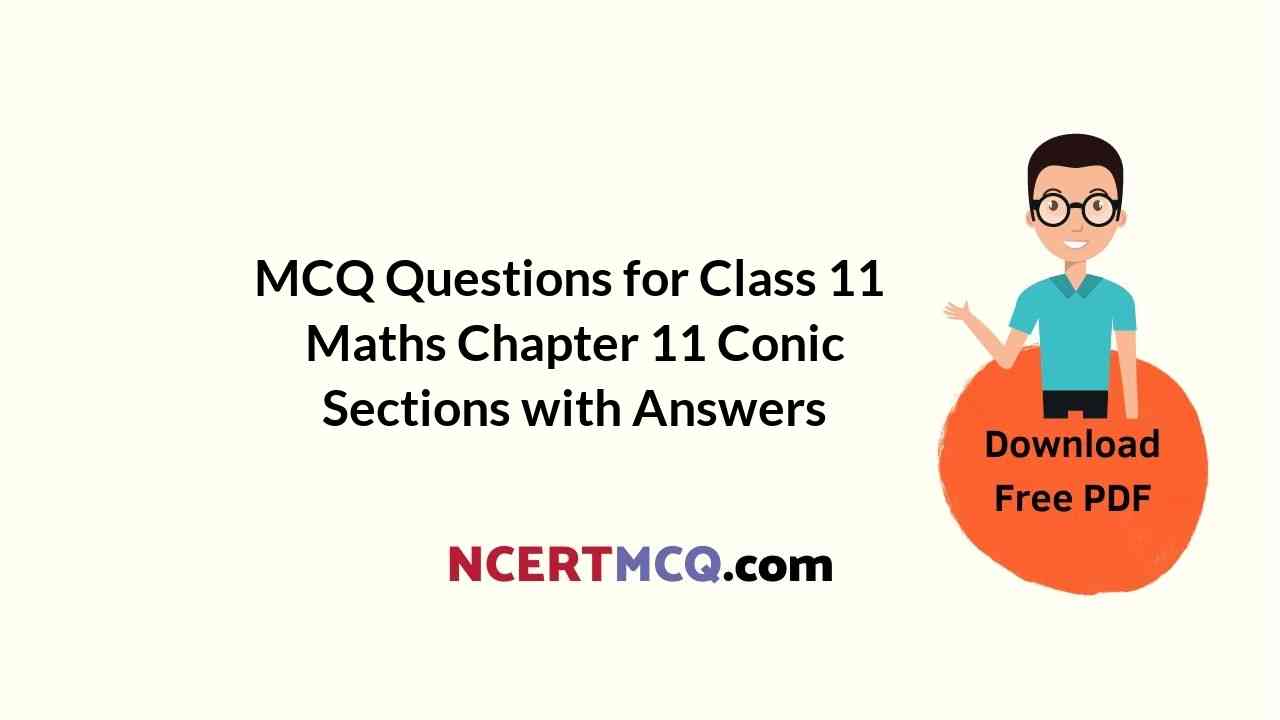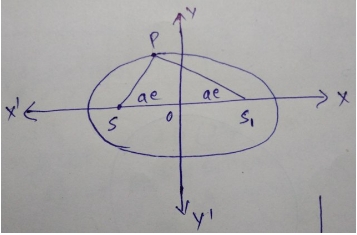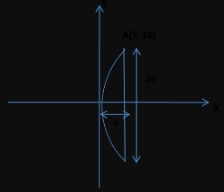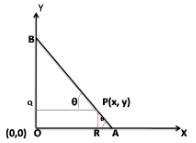Check the below Online Education NCERT MCQ Questions for Class 11 Maths Chapter 7 Permutations and Combinations with Answers Pdf free download. MCQ Questions for Class 11 Maths with Answers were prepared based on the latest exam pattern. We have provided Permutations and Combinations Class 11 Maths MCQs Questions with Answers to help students understand the concept very well.
Class 11 Maths Chapter 7 MCQ With Answers
Maths Class 11 Chapter 7 MCQs On Permutations and Combinations
MCQ Questions On Permutation And Combination Class 11 Question 1.
There are 12 points in a plane out of which 5 are collinear. The number of triangles formed by the points as vertices is
(a) 185
(b) 210
(c) 220
(d) 175
Answer
Answer: (b) 210
Hint:
Total number of triangles that can be formed with 12 points (if none of them are collinear)
= 12C3
(this is because we can select any three points and form the triangle if they are not collinear)
With collinear points, we cannot make any triangle (as they are in straight line).
Here 5 points are collinear. Therefore we need to subtract 5C3 triangles from the above count.
Hence, required number of triangles = 12C3 – 5C3 = 220 – 10 = 210
Permutation And Combination Class 11 MCQ Question 2.
The number of combination of n distinct objects taken r at a time be x is given by
(a) n/2Cr
(b) n/2Cr/2
(c) nCr/2
(d) nCr
Answer
Answer: (d) nCr
Hint:
The number of combination of n distinct objects taken r at a time be x is given by
nCr = n!/{(n – r)! × r!}
Let the number of combination of n distinct objects taken r at a time be x.
Now consider one of these n ways. There are e objects in this selection which can be arranged in r! ways.
So, each of the x combinations gives rise to r! permutations. So, x combinations will give rise to x×(r!).
Consequently, the number of permutations of n things, taken r at a time is x×(r!) and it is equal to nPr
So, x×(r!) = nPr
⇒ x×(r!) = n!/(n – r)!
⇒ x = n!/{(n – r)! × r!}
⇒ nCr = n!/{(n – r)! × r!}
MCQ On Permutation And Combination Class 11 Question 3.
Four dice are rolled. The number of possible outcomes in which at least one dice show 2 is
(a) 1296
(b) 671
(c) 625
(d) 585
Answer
Answer: (b) 671
Hint:
No. of ways in which any number appearing in one dice = 6
No. of ways in which 2 appear in one dice = 1
No. of ways in which 2 does not appear in one dice = 5
There are 4 dice.
Getting 2 in at least one dice = Getting any number in all the 4 dice – Getting not 2 in any of the 4 dice.
= (6×6×6×6) – (5×5×5×5)
= 1296 – 625
= 671
Permutation And Combination MCQ Question 4.
If repetition of the digits is allowed, then the number of even natural numbers having three digits is
(a) 250
(b) 350
(c) 450
(d) 550
Answer
Answer: (c) 450
Hint:
In a 3 digit number, 1st place can be filled in 5 different ways with (0, 2, 4, 6, 8)
10th place can be filled in 10 different ways.
100th place can be filled in 9 different ways.
So, the total number of ways = 5 × 10 × 9 = 450
MCQ On Permutation And Combination Question 5.
The number of ways in which 8 distinct toys can be distributed among 5 children is
(a) 58
(b) 85
(c) 8P5
(d) 5P5
Answer
Answer: (a) 58
Hint:
Total number of toys = 8
Total number of children = 5
Now, each toy can be distributed in 5 ways.
So, total number of ways = 5 × 5 × 5 × 5 × 5 × 5 × 5 × 5
= 58
Permutation And Combination MCQ Class 11 Question 6.
The value of P(n, n – 1) is
(a) n
(b) 2n
(c) n!
(d) 2n!
Answer
Answer: (c) n!
Hint:
Given,
Given, P(n, n – 1)
= n!/{(n – (n – 1)}
= n!/(n – n + 1)}
= n!
So, P(n, n – 1) = n!
Class 11 Maths Chapter 7 MCQ With Answers Question 7.
In how many ways can 4 different balls be distributed among 5 different boxes when any box can have any number of balls?
(a) 54 – 1
(b) 54
(c) 45 – 1
(d) 45
Answer
Answer: (b) 54
Hint:
Here, both balls and boxes are different.
Now, 1st ball can be placed into any of the 5 boxes.
2nd ball can be placed into any of the 5 boxes.
3rd ball can be placed into any of the 5 boxes.
4th ball can be placed into any of the 5 boxes.
So, the required number of ways = 5 × 5 × 5 × 5 = 54
Permutations And Combinations MCQ Question 8.
The number of ways of painting the faces of a cube with six different colors is
(a) 1
(b) 6
(c) 6!
(d) None of these
Answer
Answer: (a) 1
Hint:
Since the number of faces is same as the number of colors,
therefore the number of ways of painting them is 1
MCQ Of Chapter 7 Maths Class 11 Question 9.
Out of 5 apples, 10 mangoes and 13 oranges, any 15 fruits are to be distributed among 2 persons. Then the total number of ways of distribution is
(a) 1800
(b) 1080
(c) 1008
(d) 8001
Answer
Answer: (c) 1008
Hint:
Given there are 5 apples, 10 mangoes and 13 oranges.
Let x1 is for apple, x2 is for mango and x3 is for orange.
Now, first we have to select total 15 fruits out of them.
x1 + x2 + x3 = 15 (where 0 ⇐ x1 ⇐ 5, 0 ⇐ x2 ⇐ 10, 0 ⇐ x3 ⇐ 13)
= (x0 + x1 + x2 +………+ x5)×(x0 + x1 + x2 +………+ x110)×(x0 + x1 + x2 +………+ x13)
= {(1- x6)/(1 – x)}×{(1- x11)/(1 – x)}×{(1- x14)/(1 – x)}
= {(1- x6)×(1- x11)×{(1- x14)}/(1 – x)³
= {(1- x6)×(1- x11)×{(1- x14)} × ∑3+r+1Cr × xr
= {(1- x11 – x6 + x17)×{(1- x14)} × ∑3+r+1Cr × xr
= {(1- x11 – x6 + x17 – x14 + x25 + x20 – x31)} × ∑2+rCr × xr
= 1 × ∑2+rCr × xr – x11 × ∑2+rCr × xr – x6 × ∑2+rCr × xr + x17 × ∑2+rCr × xr – x14 × ∑2+rCr × xr + x25 × ∑2+rCr × xr + x20 × ∑2+rCr × xr – x31 × ∑2+rCr × xr
= ∑2+rCr × xr – ∑2+rCr × xr+11 – ∑2+rCr × xr+6 + ∑2+rCr × xr+17 – ∑2+rCr × xr+14 + ∑2+rCr × xr+25 + ∑2+rCr × xr+20 – ∑2+rCr × xr+25
Now we have to find co-efficeient of x15
= 2+15C15 – 2+4C4 – 2+9C9 – 2+1C1 (rest all terms have greater than x15, so its coefficients are 0)
= 17C15 – 6C4 – 11C9 – 3C1
= 17C2 – 6C2 – 11C2 – 3C1
= {(17×16)/2} – {(6×5)/2} – {(11×10)/2} – 3
= (17×8) – (3×5) – (11×5) – 3
= 136 – 15 – 55 – 3
= 136 – 73
= 63
Again we have to distribute 15 fruits between 2 persons.
So x1 + x2 = 15
= 2-1+15C15
= 16C15
= 16C1
= 16
Now total number of ways of distribution = 16 × 63 = 1008
Permutation And Combination MCQs With Answers Question 10.
6 men and 4 women are to be seated in a row so that no two women sit together. The number of ways they can be seated is
(a) 604800
(b) 17280
(c) 120960
(d) 518400
Answer
Answer: (a) 604800
Hint:
6 men can be sit as
× M × M × M × M × M × M ×
Now, there are 7 spaces and 4 women can be sit as 7P4 = 7P3 = 7!/3! = (7 × 6 × 5 × 4 × 3!)/3!
= 7 × 6 × 5 × 4 = 840
Now, total number of arrangement = 6! × 840
= 720 × 840
= 604800
MCQ Of Permutation And Combination Class 11 Question 11.
The number of ways can the letters of the word ASSASSINATION be arranged so that all the S are together is
(a) 152100
(b) 1512
(c) 15120
(d) 151200
Answer
Answer: (d) 151200
Hint:
Given word is : ASSASSINATION
Total number of words = 13
Number of A : 3
Number of S : 4
Number of I : 2
Number of N : 2
Number of T : 1
Number of O : 1
Now all S are taken together. So it forms a single letter.
Now total number of words = 10
Now number of ways so that all S are together = 10!/(3!×2!×2!)
= (10×9×8×7×6×5×4×3!)/(3! × 2×2)
= (10×9×8×7×6×5×4)/(2×2)
= 10×9×8×7×6×5
= 151200
So total number of ways = 151200
MCQs On Permutation And Combination Question 12.
If repetition of the digits is allowed, then the number of even natural numbers having three digits is
(a) 250
(b) 350
(c) 450
(d) 550
Answer
Answer: (c) 450
Hint:
In a 3 digit number, 1st place can be filled in 5 different ways with (0, 2, 4, 6, 8)
10th place can be filled in 10 different ways.
100th place can be filled in 9 different ways.
So, the total number of ways = 5 × 10 × 9 = 450
MCQs On Permutations And Combinations Class 11 Question 13.
Let Tn denote the number of triangles which can be formed using the vertices of a regular polygon on n sides. If Tn+1 – Tn = 21, then n equals
(a) 5
(b) 7
(c) 6
(d) 4
Answer
Answer: (b) 7
Hint:
The number of triangles that can be formed using the vertices of a regular polygon = nC3
Given, Tn+1 – Tn = 21
⇒ n+1C3 – nC3 = 21
⇒ nC2 + nC3 – nC3 = 21 {since n+1Cr = nCr-1 + nCr}
⇒ nC2 = 21
⇒ n(n – 1)/2 = 21
⇒ n(n – 1) = 21×2
⇒ n² – n = 42
⇒ n² – n – 42 = 0
⇒ (n – 7)×(n + 6) = 0
⇒ n = 7, -6
Since n can not be negative,
So, n = 7
Permutations And Combinations MCQ Class 11 Question 14.
How many ways are here to arrange the letters in the word GARDEN with the vowels in alphabetical order?
(a) 120
(b) 240
(c) 360
(d) 480
Answer
Answer: (c) 360
Hint:
Given word is GARDEN.
Total number of ways in which all letters can be arranged in alphabetical order = 6!
There are 2 vowels in the word GARDEN A and E.
So, the total number of ways in which these two vowels can be arranged = 2!
Hence, required number of ways = 6!/2! = 720/2 = 360
Permutations And Combinations Class 11 MCQ Questions Question 15.
How many factors are 25 × 36 × 52 are perfect squares
(a) 24
(b) 12
(c) 16
(d) 22
Answer
Answer: (a) 24
Hint:
Any factors of 25 × 36 × 52 which is a perfect square will be of the form 2a × 3b × 5c
where a can be 0 or 2 or 4, So there are 3 ways
b can be 0 or 2 or 4 or 6, So there are 4 ways
a can be 0 or 2, So there are 2 ways
So, the required number of factors = 3 × 4 × 2 = 24
Permutation And Combination Class 11 Extra Questions With Answers Question 16.
A student is to answer 10 out of 13 questions in an examination such that he must choose at least 4 from the first five questions. The number of choices available to him is
(a) 40
(b) 196
(c) 280
(d) 346
Answer
Answer: (b) 196
Hint:
There are two cases
1. When 4 is selected from the first 5 and rest 6 from remaining 8
Total arrangement = 5C4 × 8C6
= 5C1 × 8C2
= 5 × (8×7)/(2×1)
= 5 × 4 × 7
= 140
2. When all 5 is selected from the first 5 and rest 5 from remaining 8
Total arrangement = 5C5 × 8C5
= 1 × 8C3
= (8×7×6)/(3×2×1)
= 8×7
= 56
Now, total number of choices available = 140 + 56 = 196
Permutation And Combination MCQs With Answers Pdf Question 17.
Four dice are rolled. The number of possible outcomes in which at least one dice show 2 is
(a) 1296
(b) 671
(c) 625
(d) 585
Answer
Answer: (b) 671
Hint:
No. of ways in which any number appearing in one dice = 6
No. of ways in which 2 appear in one dice = 1
No. of ways in which 2 does not appear in one dice = 5
There are 4 dice.
Getting 2 in at least one dice = Getting any number in all the 4 dice – Getting not 2 in any of the 4 dice.
= (6×6×6×6) – (5×5×5×5)
= 1296 – 625
= 671
Question 18.
In how many ways in which 8 students can be sated in a line is
(a) 40230
(b) 40320
(c) 5040
(d) 50400
Answer
Answer: (b) 40320
Hint:
The number of ways in which 8 students can be sated in a line = 8P8
= 8!
= 40320
Question 19.
The number of squares that can be formed on a chess board is
(a) 64
(b) 160
(c) 224
(d) 204
Answer
Answer: (d) 204
Hint:
A chess board contains 9 lines horizontal and 9 lines perpendicular to them.
To obtain a square, we select 2 lines from each set lying at equal distance and this equal
distance may be 1, 2, 3, …… 8 units, which will be the length of the corresponding square.
Now, two lines from either set lying at 1 unit distance can be selected in 8C1 = 8 ways.
Hence, the number of squares with 1 unit side = 8²
Similarly, the number of squares with 2, 3, ….. 8 unit side will be 7², 6², …… 1²
Hence, total number of square = 8² + 7² + ……+ 1² = 204
Question 20.
How many 3-letter words with or without meaning, can be formed out of the letters of the word, LOGARITHMS, if repetition of letters is not allowed
(a) 720
(b) 420
(c) none of these
(d) 5040
Answer
Answer: (a) 720
Hint:
The word LOGARITHMS has 10 different letters.
Hence, the number of 3-letter words(with or without meaning) formed by using these letters
= 10P3
= 10 ×9 ×8
= 720
We hope the given NCERT MCQ Questions for Class 11 Maths Chapter 7 Permutations and Combinations with Answers Pdf free download will help you. If you have any queries regarding CBSE Class 11 Maths Permutations and Combinations MCQs Multiple Choice Questions with Answers, drop a comment below and we will get back to you soon.
Class 11 Maths MCQ:
- Sets Class 11 MCQ
- Relations and Functions Class 11 MCQ
- Trigonometric Functions Class 11 MCQ
- Principle of Mathematical Induction Class 11 MCQ
- Complex Numbers and Quadratic Equations Class 11 MCQ
- Linear Inequalities Class 11 MCQ
- Permutations and Combinations Class 11 MCQ
- Binomial Theorem Class 11 MCQ
- Sequences and Series Class 11 MCQ
- Straight Lines Class 11 MCQ
- Conic Sections Class 11 MCQ
- Introduction to Three Dimensional Geometry Class 11 MCQ
- Limits and Derivatives Class 11 MCQ
- Mathematical Reasoning Class 11 MCQ
- Statistics Class 11 MCQ
- Probability Class 11 MCQ
